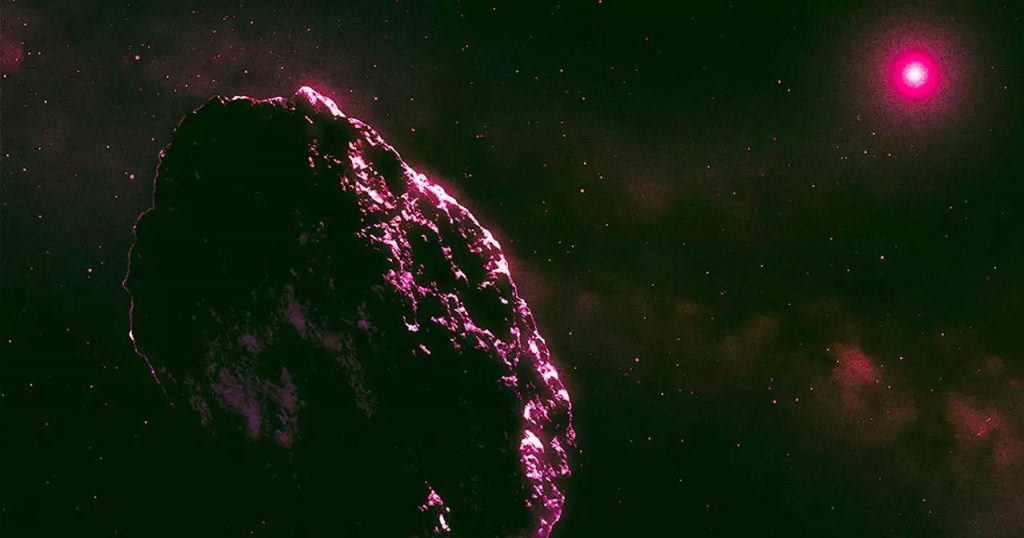A recent study published in the journal Nature Astronomy has revealed that ancient, massive “dark asteroids” located in the region between Mars and Jupiter are likely to be some of the earliest relics from the early days of our solar system’s formation.
These asteroids have been found to contain water, leading to the discovery of a whole new class of asteroids.
According to Driss Takir, a planetary scientist at NASA Astromaterials and the lead author of the study, these asteroids are almost as old as our solar system. The water content in these asteroids is similar to that of the dwarf planet Ceres, which is the only known dwarf planet to have a significant amount of water in the solar system.
The discovery of water in these ancient asteroids could provide new insights into the early stages of our solar system’s development.
The mysterious origins of these Ceres-like rocks have been brought to light by a group of astronomers using NASA’s Infrared Telescope Facility. Through their observations, the researchers have uncovered the composition of these rocks and discovered that they are porous, which indicates that they were not heated enough to form a compact structure soon after their formation.
Co-author Vladimir Neumann, a geoscientist at the Technical University of Berlin, explained that this suggests that the asteroids were formed in the colder, outer regions of the solar system and then pulled inward by the gravitational forces of Jupiter or Saturn.
According to Neumann, their computational models reveal that these asteroids likely arrived in the main asteroid belt through complex dynamic processes shortly after their formation in the outer regions of the solar system.
The discovery of water in ancient asteroids within our own solar system has potentially fascinating implications for Earth. This finding provides support for a growing theory among scientists that some or all of the water on our planet may have originated from asteroids.
Given that these asteroids, similar in composition to Ceres, can be pulled inward as far as Mars, it’s possible that they collided with Earth in the past. Therefore, this new discovery could be a significant step in understanding the source of our planet’s water.
“This would be perhaps the kind of objects that made it into the solar system and brought ice and organics with them,” Andy Rivkin, an astronomer at John Hopkins who was not involved in the study, told Mashable. “Their cousins might have hit the Earth and brought some of that, as well as hitting Mars.”

